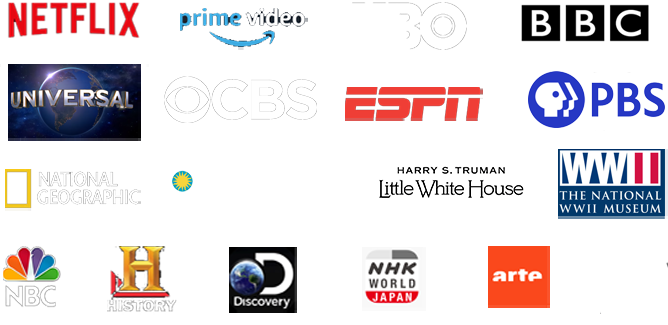This fascinating silent color film from World War II shows a variety of rockets produced by the United States for use in the conflict. Many of these weapons were developed at Caltech, and the film shows some of the work done there to perfect these systems. Various launch platforms are shown including small craft such as the LCI and the LCM, and aircraft of various kinds including the Navy’s Harpoon.
The 5-inch Forward Firing Aircraft Rocket or FFAR was an American rocket developed during World War II for attack from airplanes against ground and ship targets. The first FFARs were developed by the U.S. Navy and introduced in June 1943. They had a 3.5-inch diameter and a non-explosive warhead, since they were used as an aircraft-launched ASW (Anti-Submarine Warfare) rocket and worked by puncturing the hull. It was accurate enough for use against surface ships and land targets, but these missions required an explosive warhead. A 5-inch anti-aircraft shell was attached to the 3.5-inch rocket motor, creating the 5-Inch FFAR, which entered service in December 1943. Performance was limited because of the increased weight, limiting speed to 780 km/h (485 mph). The High Velocity Aircraft Rocket, or HVAR, was developed to fix this flaw. Aircraft that used FFAR include the Douglas SBD Dauntless dive bomber and the Vought F4U Corsair fighter.
The Western Allies of World War II for the most part employed little rocket artillery. During later periods of the war, British and Canadian troops used the Land Mattress, a towed rocket launcher. The United States Army built and deployed a small number of T34 Calliope and T40 Whizbang rocket artillery tanks (converted from M4 Sherman medium tanks) in France and Italy.
In the Pacific, however, the US Navy made heavy use of rocket artillery, adding to the already intense bombardment by the guns of heavy warships to soften up Japanese-held islands before the US Marines would land. On Iwo Jima, the Marines made use of rocket artillery trucks in a similar fashion as the Soviet Katyusha, but on a smaller scale.
Landing Ship Medium were amphibious assault ships of the United States Navy in the World War II that were equipped with rockets as a method of providing fire support. Rockets as a weapon had many characteristics to commend their adoption for close fire support.
The Atlantic Fleet variation of the LCS(S) mounted two rocket racks, which carried a total of 56 short range 4.5-inch rockets. These were used in action for the first time during Operation Torch in November 1942. Later in amphibious operations against Sicily and Italy, they became even more appreciated. After action reports flowed in, which praised the fire support capability of the rocket equipped craft. The USN designers went back to the drawing boards to find even more designs that could incorporate rockets to provide fire support. By 1944 some Landing Craft, Infantry (LCI) were being converted to rocket equipped support craft. In September 1944 USN designers applied rocket mounts to the Landing Ship, Medium (LSM) and in October the Pacific Fleet asked for twelve of the rocket ships. This created the largest of the rocket equipped fire support ships to appear in the war, the Landing Ship, Medium, Rocket LSM(R).
Twelve of the ships, numbered 188 to 199 were ordered. A standard LSM was converted into the new fire support ship. The standard LSM came with a large, open well. The well was decked over to provide three ammunition-handling rooms, each with two magazines. Rocket engines and warheads were stored separately and were assembled in the handling rooms. The assembled 5-Inch rockets were then passed by hand to the deck for loading. On deck an extensive series of rocket launch rails covered most open area. There were 75 four rail Mk 36 rocket launchers and 30 six rail Mk 30 launchers. This total of 480 5-inch rockets could be launched within 30 seconds to provide area saturation bombardment. The ships were also equipped with one 5-inch/38 gun in an enclosed mount, two single 40mm guns and three 20mm Oerlikons.
We encourage viewers to add comments and, especially, to provide additional information about our videos by adding a comment! See something interesting? Tell people what it is and what they can see by writing something for example like: “01:00:12:00 — President Roosevelt is seen meeting with Winston Churchill at the Quebec Conference.”
This film is part of the Periscope Film LLC archive, one of the largest historic military, transportation, and aviation stock footage collections in the USA. Entirely film backed, this material is available for licensing in 24p HD and 2k. For more information visit http://www.PeriscopeFilm.com

